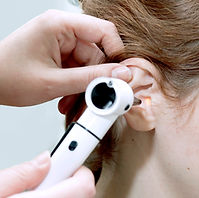
Sense of Sight: Peripheral Vision

This lesson contains affiliate links to products I have used and personally recommend. At no cost to you, I make a commission for purchases made through the links or advertisements. These commissions help to pay for the costs of the site and enable it to remain free for anyone who wants to use it.
Objectives:
-
Students will understand more about the sense of sight, and how the eye works.
Question that encompasses the objective:
What are peripheral and foveal visions? Why isn’t our peripheral vision as strong as the foveal vision?
Prepare the Learner: Activating Prior Knowledge
How will students’ prior knowledge be activated?
Warm up by asking students:
-
Prior to this lesson, students should probably have some basic knowledge about the eye structure.
-
A small experiment will be conducted before the class starts. A picture will be shown. Students will be asked to look attentively at a specific spot in the picture. Without changing the focus of vision they would have to say what other things they could see.
-
The purpose of this experiment would be to initiate a debate about what just happened. Why when we are gazing at something specific, can’t we clearly see the objects around it? This will then segway into the introduction of peripheral and foveal vision.
Materials and Free Resources to Download for this Lesson:
-
First experiment picture (public domain photo by Yinan Chen)
-
Experiment video "Hack Your Peripherals" on National Geographic.
-
Eye anatomy picture (Creative Commons Attribution 3.0 Unported image by BruceBlaus)
-
Eye anatomy picture for experiment (public domain photo by heblo)
-
Red and blue clay (or similarly sized and colored objects)
Input:
What is the most important content in this lesson?
To reach the lesson’s objectives, the students need to understand:
-
The difference between foveal and peripheral vision.
-
The eye structure and components, such as retina, rods and cones to understand why peripheral vision is weaker than foveal vision.
-
Why is peripheral vision important, and what would happened if it got affected?
How will the learning of this content be facilitated?
-
This lesson will be initiated with a small experiment regarding a picture. Children will be asked to look attentively at a specific spot in the picture. Without changing the focus of vision they would have to say what other things they see.
-
The purpose of this experiment would be to start a debate about what just happened. Why when we are gazing at something specific, can’t we clearly see the objects around it? This will then segway into the introduction of peripheral and foveal vision.
-
Briefly it will be explained that peripheral vision is the part of our vision that is outside the center of our gaze while Foveal vision refers to vision in the center of the field of vision, where visual acuity is at its highest.
-
The second experiment will be done with a set of keys (or another small and safe object), as shown in the National Geographic Video.
-
Next, a chart will be displayed on the board, called: Think, Rethink, and Reexamine. In the first chart, thoughts about what happened in both experiments will be recorded. The idea would be to record why they think the eye works like the way it does, as well as, other thoughts. It will be sort of a brainstorming.
-
After this part of the chart has been completed, a picture of the eye will be introduced. In this part, the teacher will provide a brief explanation of the anatomy of the eye.
-
The students will then be asked to rethink this phenomenon. They will each be given an unlabeled image of the eye, where they will have to distribute the rods and cones around the retina. These cells can be represented by small balls of clay, (blue for rods, and red for cones) *Clay can easily be replaced by other small objects.
-
Thoughts will be recorded on the “Rethink” section. The teacher will then explain that the density of receptor cells on the retina is greatest at the center and lowest at the edges. Next, the children will each choose a section of the following article: "Pretty Cool Facts About Peripheral Vision" and will use the information in the article and on the experiments conducted to discuss how losing peripheral vision could affect us. The conclusions would then be written on the re-examine part
Time/Application
3-5 minutes
Guided Introduction
Review the class/ agenda with the students:
-
Conduct 2 experiments
-
Debate what was observed in the experiments
-
Do the first part of the chart: Think
-
Introduction of the eye anatomy picture
-
Experiment of rods and cones.
-
Second part of the chart: Rethink
-
Reading of article
-
Third part of the chart: Reexamine
10 minutes
Introductory Activities:
Experiments using a picture and a set of keys.
-
The first experiment will be to examine a picture of a railway at sunset. Children will be told to center their vision on the sun. Without changing their focus, they will point out other details in the picture.
-
Hold a discussion or debate about why when we are gazing at something specific, we can’t clearly see the objects around it.
-
The second experiment will then be throwing and grabbing a set of keys right in front of the center of the vision. Then the keys will be thrown again, but to their sides. (Like in the National Geographic video.)
10 minutes
"Think", The First Part of Think, Rethink, and Reexamine
-
The students will jot down their thoughts on the experiment in the first part of the chart, "Think".
-
What just happened?
-
Why can’t we clearly see the objects that surround a focal point?
15 minutes
"Rethink", The Second Part of Think, Rethink, and Reexamine
-
The image of an eye will be displayed. In this part the teacher will explain the following (or you can refer to the lesson "All About Sight")
-
The retina is a layer of tissue located in the back of the inner eye that converts light images to nerve signals and transmits them to the brain. There are receptor cells all around the retina, these are the rod cells and the cone cells.
-
The rods are more numerous, some 120 million, and are more sensitive than the cones. However, they are not sensitive to color. The 6 to 7 million cones provide the eye's color sensitivity.
-
The cones are less sensitive to light than the rods. The cones are responsible for all high resolution vision.
-
-
Children will then be asked to think and record their thoughts about this phenomenon in the "Rethink" section. Where and how many receptor cells should be located in order for the peripheral vision and foveal vision work the way they do?
-
They will each be given an unlabeled image of the eye, where they will have to distribute the rods and cones around the retina. These cells can be represented by small balls of clay (maybe blue for rods, and red for cones). They can place them wherever they think they belong.
-
The teacher will then explain that the density of receptor cells on the retina is greatest at the center and lowest at the edges.
15 minutes
Closure/Independent Assessment:
"Reexamine", The Third Part of Think, Rethink, and Reexamine
-
Each student will read the following article, "Pretty Cool Facts About Peripheral Vision".
-
They will use the information in the article and from the experiments conducted to form conclusions about how losing peripheral vision could affect us. The conclusions would then be written on the re-examine part.
Individualized Instruction/Scaffolding
English Language Learners can be supported in this lesson by using visuals of the concepts defined, so they can read the definitions. These concepts would be: foveal vision, peripheral vision, cones, rod and retina.
The annotation of thoughts on the Think, Rethink and Reexamine charts are also helpful for English Language Learners.














